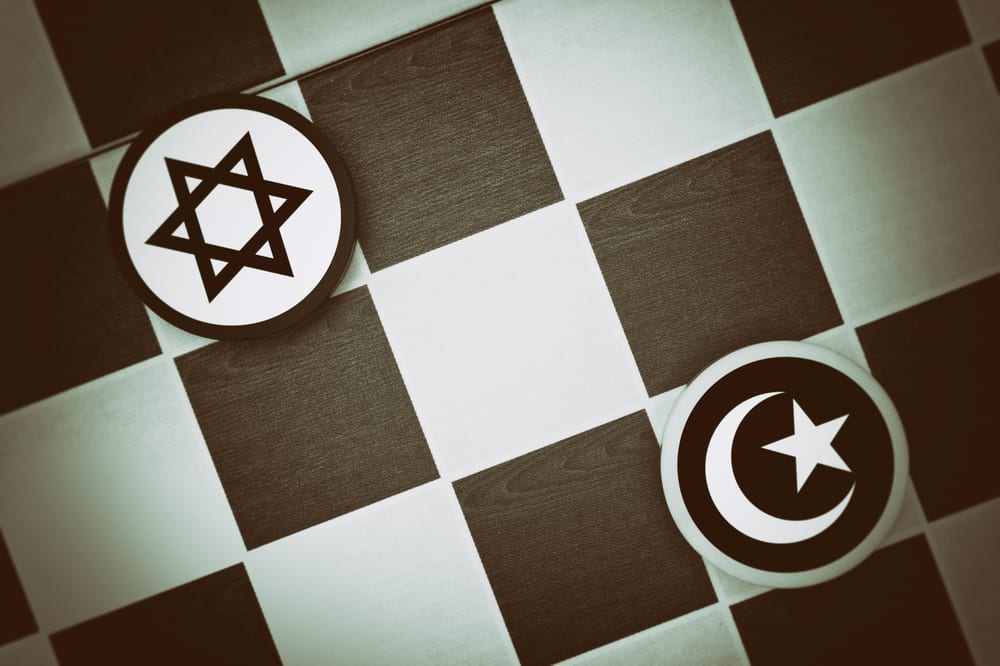Throw away your kippah. Burn it. Is it really so holy? It is just cloth. Even more so, modern physics now says that the cloth is a mere hologram projected from the depths of space–a colorless electron rearrangement, no different than a rock or a stick. How important can it be? Certainly there is no blessing before one puts on a kippah. Perhaps it is totally external, superficial, or even irrelevant. Did Jews wear a kippah in Mitzrayim? Forgive me for playing devil’s advocate for a minute.
Surely, a Jew isn’t Biblically required to wear a kippah in order to believe in the Infinite Creator of the universe, perform a kind deed, nor even do a mitzvah. Only later, did it become a rabbinical requirement (Taz 2:5), and some feel it is still simply a righteous extra or midat chassidut (saintliness)(Rambam, Deot 5:6) for the regular Joe. Sure, a head covering may increase Joe’s consciousness while he does a mitzvah, yet these tasks can technically be accomplished with or without the kippah. A powerful tradition turned law, yes, but does the yarmulke have the power and true spiritual weight that we and the outside world ascribe to it? This is how the world recognizes Jews. Yet this externality is so easily dropped, blown away, or palmed during a touchdown blitz, never mind stuffed in the loneliness of random glove compartments everywhere.
And even if it is on all the time, today’s custom kippahs are not typically those of days past, as far as tangible reminders go. Nowadays, head coverings have evolved into a light comfortable, aerated bowl, which perhaps leads to periodic higher awareness while scratching one’s head or walking in the rain. It is not the Middle Eastern head squeezing turban of the past.

Easily, wearing the 4 cornered garment with tzitzit offers a more powerful reminder to ‘do the right thing.’ In that vein, the Talmud dramatically relates (Menachot 44a) that tzitzit have been known to literally slap the face of a disrobing Jew, saving him from the abyss of sexual debauchery. What could be more powerful than eye-whipping tzitzit in instantly correcting one's actions and re-connecting the Jew to the Creator’s handbook?
Kabbalistic scholar, Rabbi Zamir Cohen, shlita, is often asked by Jews who want to strengthen their Torah observance, “What should I start with…the kippah or the tzitzit?” His answer is invariably, “the kippah,” despite its lack of blessing, intrinsic holiness, and total absence in the written Torah. Does it simply symbolize membership in the esteemed group called, ‘the Jewish people?’ Surely one can simply visit the JCC and eat a bagel and lox on Sunday to project that message. Perhaps it’s a reminder to us of the belief in the Highest Power, as is traditionally taught? But do Jews need to prove ourselves believers to the outside world?
The answer is yes. The kippah is indeed arguably the most indispensable of Jewish garb, in terms of maintaining strong Torah observance. And, this is not because it’s a tangible self-reminder on one’s head, per se. Rather; the yarmulke invariably forces others to perceive the wearer differently–in a higher light. The public kippah wearer displays his personal religious expectations of himself to himself, to the Infinite, and to other people. In turn, those others look at him differently and hold him accountable. The general public, both Jewish and not, expect more of the kippah wearing Jew: to be ethical, to be kind, to eat kosher, to stand for the elderly and scholars, to defend the orphan and widow, to keep Shabbat–whether or not he is up to the task. The layer of public expectation is a heavy layer, heavier than the kippah itself.
Indeed, that public expectation of goodness is ultimately not the main reason a Jew should perform commandments and/or avoid sin in public, but it may often be the first cause. The harsh human reality is that, on a normal Tuesday, people fear other people’s opinion before G-d's opinion. What will the public think of a kippa wearing Jew who throws trash on the street, misspeaks on television, or cuts a grandmother off in line at the bank? The ‘kippah expectation’ leads the Jew to think twice before any public action, by advertising his personal high expectations of himself.
Everyone is extremely bothered by the kippah-wearing Jew who steals, murders or rapes. These are heinous enough crimes without the religious garb, but wearing religious garb while committing a crime screams falsehood and hypocrisy of highest order. And while the typical observant Jew vigorously avoids such heinous crimes, even the heist of a company envelope or a vulgar word could spark office controversy.
Wearing a kippah in public is a superficial, external, yet powerful projection of self-expectation, which turns society into a great mirror focused on the individual Jew. The Jew wearing a kippah elevates his personal subservience to the rules of the Highest Power that shines back at him through the public's focus on him.
The kippah has no intrinsic holiness. Rather, it is the ultimate expression of the reflection mirrored at him. So, what appears at face value to be public superficiality, instead truly transforms the individual internally and motivates him to continuous growth and ultimate change.

The electromagnetic physical world, where the kippah resides, according to the Zohar, is considered the ‘World of Falsehood’. The yarmulke lives in the world of costume physicality. Yet, it can powerfully shield its wearer from the overwhelming forces of outside physical falsehood. Only truth can emanate from inside the Torah clinging Jew, and when that truth is projected it is amplified by the kippah.
Yet, when falsehood is allowed into a Jew’s action, which is the opposite of his true nature, the kippah falls flatter than ever, and remains the amplification of falsehood that it can't physically escape. Having no intrinsic holiness, the kippah cannot do anything other than project its input. But this thin barrier is a magnificent and essential amplifier of the Jew’s inner truth.




